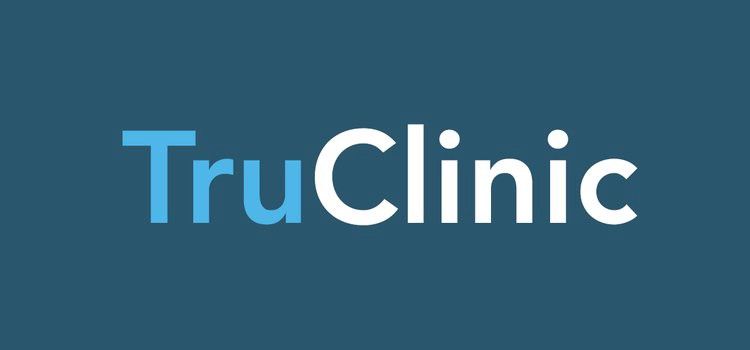“The reason why telehealth hasn’t exploded like Uber is because it’s a cultural shift. This is not a two year transition cycle, it’s a 10, potentially even 15 year process to really integrate telehealth as a standard of care across the spectrum of healthcare.”
To understand the beginnings of Salt Lake City-based TruClinic, we must journey down a path that CEO Justin Kahn admits “is really strange and convoluted.” Hopefully, my storytelling skills are up to par.
As a child, Kahn’s stepfather worked as an administrator for VA (Veterans Affairs) hospitals, which in turn meant Kahn lived on hospital grounds and witnessed firsthand the ins-and-outs of the military healthcare system. It was during this time that Kahn began to cultivate a deeper understanding of post-traumatic stress disorder (PTSD), knowledge that would become incredibly relevant the older he grew.
When he was 14, Kahn suffered a traumatic brain injury, struck in the head by a bat at a church softball game. Originally diagnosed with PTSD, it wasn’t until over a decade later that the effects were fully realized.
“In reality, it was a misdiagnosis,” said Kahn. “13 years later, a neurologist figured out that I was having a type of epilepsy called temporal lobe epilepsy (TLE). She put me on an anti-seizure medication and almost overnight, it changed my life.”
Fast-forward to adulthood. Kahn was working as a natural disaster claims adjustor for State Farm when he came across a speech from Robert Gates, the former Secretary of Defense, about the Department of Defense’s move to invest billions of dollars addressing the PTSD epidemic in the military. Just like that, the lightbulb clicked.
“So I happened to read this article and I started thinking about my own situation, what the infrastructure was like at the VA, and came up with the idea of connecting active-duty troops with VA providers from their home state at the beginning of a service member’s career,” said Kahn. “And give those troops the ability to communicate with the VA providers through a secure webcam connection.”
Kahn pitched this idea to a local VA, who told him they would run a pilot program if he could bring them the technology. An engineer was onboarded, the technology was built, and the earliest form of TruClinic was successfully piloted.
“The idea was if you could start engagement early on in a service member’s career, when they transitioned to veteran status they would continue to engage those VA providers,” said Kahn. “The other theory was if you could put this type of technology in place, then you would get veterans used to it so they would continue to utilize it going forward. That’s important because close to 40% of all veterans live in rural and highly rural areas.”
Boosted by the success, Kahn ended up receiving two grants from the Governor’s Office of Economic Development (GOED) in 2012 and 2013, again piloting another successful program for the Goshute Native American tribe, the most rurally isolated tribe in the lower 48 states.
Over the next few years, Kahn began flushing out the idea of TruClinic and building it into its present-day form, a universal cloud-based platform that connects healthcare patients and providers inside of their existing workflow.
“We’re market mature,” said Kahn. “We have 21 customers, from single physician practices up to the largest health systems, both domestically as well as internationally. Our customers are the providers. I use the term provider loosely because it could be an individual provider all the way up to health systems, integrated delivery networks, ACOs, payers and players. Basically they’re the ones coming in with both the provider and the patient population. We’re the technology platform that our customers use for all of the different types of online care.”
Through TruClinic’s platform, patients and providers can connect in a way that is fitting in 2016 — remotely, through the use of webcams and an internet connection. This is the ultimate vision of telehealth, where healthcare can be delivered in ways that don’t necessarily require a physical visit. As TruClinic’s website puts it, “We shorten the distance between patient and provider.”
“The reason why telehealth hasn’t exploded like Uber is because it’s a cultural shift,” said Kahn. “This is not a two year transition cycle, it’s a 10, potentially even 15 year process to really integrate telehealth as a standard of care across the spectrum of healthcare.”
Kahn views TruClinic through the lens of three different perspectives: it generates revenue, it saves cost, and it’s an efficient tool. They’ve been building and growing for six years, with 12 employees currently stationed in their Salt Lake office. And as strange and convoluted as TruClinic’s origin story may be, Kahn firmly believes that the best years have yet to come.
“Six years in, we’ve earned our scars,” said Kahn. “We’ve also developed multiple revenue streams, enhancements of the technology, and additional models for utilization. The challenge was, we never had enough capital to do everything we wanted to do. So we had to grow the company organically. As we brought in new customers and revenue, I was able to bring in more employees. That model served us well, even though it didn’t feel like it at the time because now what we’ve done is build a cash-flow positive company.”
Published 3/10/2016




